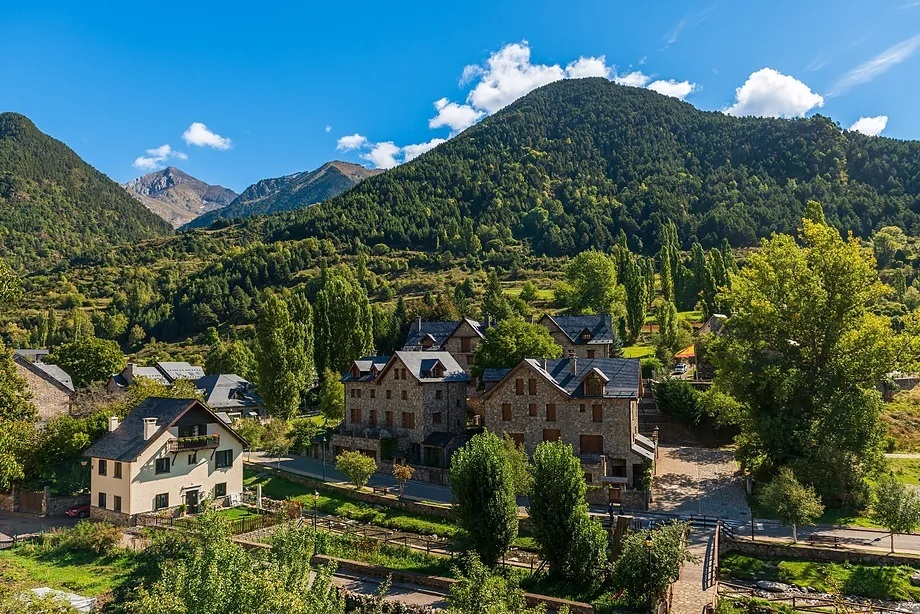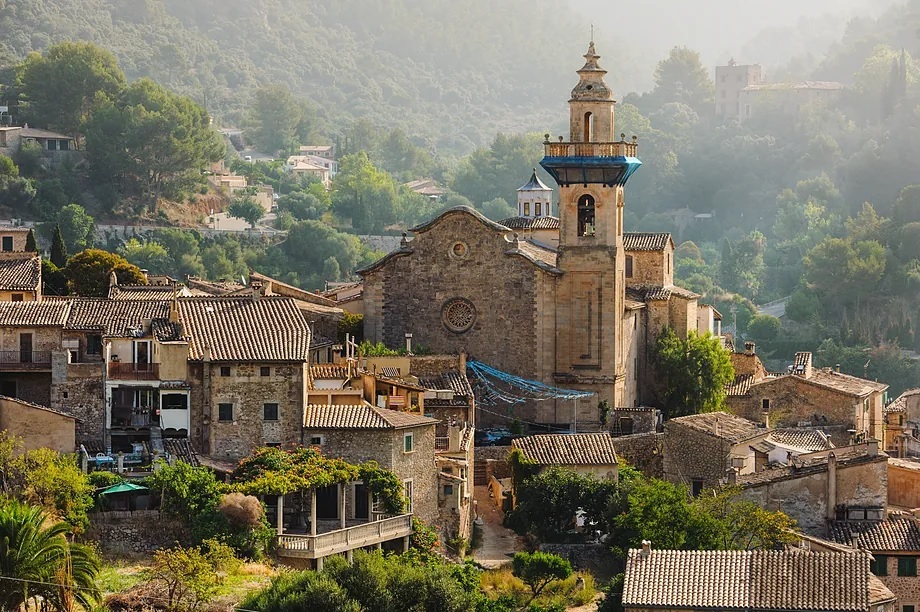There are still several days left on the calendar to enjoy the good weather. Enough to enjoy a rural getaway. And if not, you can always start planning for autumn... For all interested, here is a tour of some of the most beautiful villages in Spain, whether bathed by the sea or settled, since ancient times, on a hilltop.
We head to the islands and, specifically, to Mallorca to find another corner where time seems to have stopped and the fresh air flows among its medieval buildings of a characteristic earthy color. All sheltered by the mountains of the Sierra de Tramontana. The privileged enclave is none other than Valldemossa, another of the most beautiful villages in Spain. Located just 18 kilometers from the Balearic capital, Palma, and 436 meters above sea level, it has also been (and is) one of the favorite destinations of intellectuals and artists.
From the Nicaraguan writer Rubén Darío to the Franco-Polish composer Frédéric Chopin, who came to these lands in search of a mild climate to help him cope with the respiratory illness he suffered from, tuberculosis. The place he chose to live was one of the cells of the Royal Carthusian Monastery of Valldemossa, founded at the end of the 14th century in the center of the town, and which today offers guided tours and even concerts within its facilities. There, he gave life to a good part of his Preludes.
We set course for Cantabria and, specifically, to Comillas, the beautiful coastal town located about 50 kilometers from Santander and one of the classic summer destinations for the aristocracy since the mid-19th century. Its old town has been declared a Historic-Artistic Ensemble for having unique works of different styles such as El Capricho by the modernist architect Antonio Gaudí—its real name is Villa Quijano, as it was commissioned by the Indian Máximo Díaz de Quijano—, the old Pontifical University, a mix of Gothic and Mudejar styles, or the Soberallano Palace, a spectacular building with Venetian airs that preserves furniture by the Catalan architect and paintings by Eduardo Llorens inside.
The cemetery itself, classified as a Cultural Interest, is also a work of art, as well as the Old Square, dotted with beautiful 18th-century buildings. Within the municipality of Comillas, it is also possible to visit the La Meaza cave, where Paleolithic paintings from over 14,000 years ago are found. One cannot leave without indulging in a gastronomic treat of fresh fish at the port, visiting the Oyambre Natural Park, or taking a whole box of the legendary pasiegos butter cakes.
We move to Huesca, specifically to the Tena Valley located in the north of the province, in the heart of the Aragonese Pyrenees, where we find Sallent de Gállego, a village sculpted in stone with authentic medieval architectural gems. Among them stands out the church of La Asunción, built on top of a Gothic temple, and the El Paco bridge, which allows crossing the Aguas Limpias river, a tributary of the Gállego, and where the Royal Road used to pass.
The municipality is known for its connection to the world of the supernatural, elves, and fairies. Not in vain, the Witches, Myths, and Legends Fair has been held there for 12 years and even has its own guided tour to delve into this magical universe. If one pays attention to the doors and facades of many houses, they will see some related symbols. Additionally, Sallent de Gállego is an oasis for hiking enthusiasts as it is immersed in nature. One of the routes leads to the Aguas Limpias Waterfall. You can also reach the Foratata Peak, the most emblematic peak in the area, towering over the municipality.
Huelva is famous for its endless beaches of fine sand and its white prawns. So far, everyone agrees, but its mountain area is one of the undiscovered gems of Andalusia (and all of Spain). We are talking about the Sierra de Aracena and Picos de Aroche Natural Park, located in the north of the Andalusian province and designated as a Biosphere Reserve by UNESCO. There, in its 186,827 hectares spread between Seville and Portugal, countless charming white villages surrounded by chestnut trees, holm oaks, and cork oaks are hidden. Like Aracena, which gives its name to the mountain range and the region, of which it is the capital. It is one of the most beautiful municipalities in the region, adorned with cobbled alleyways, whitewashed facades, and a monumental 13th-century castle, built on an ancient Muslim fortification.
Located at the top of the town, it is a Cultural Interest in the Monument category. Another must-see is the Cave of Wonders, considered the first tourist cave in Spain, as it opened to the public in 1914, although it was discovered earlier, at the end of the 19th century. For accommodation, a good option is a 17th-century monastery that now houses the Convento Aracena & Spa hotel, a place full of history perfect as a base for exploring the area.



